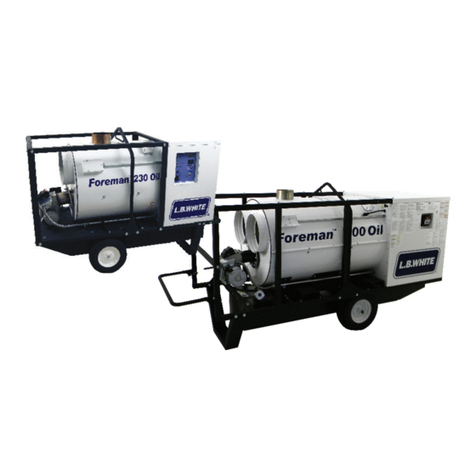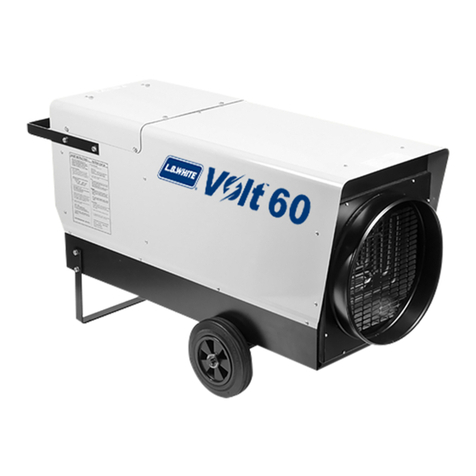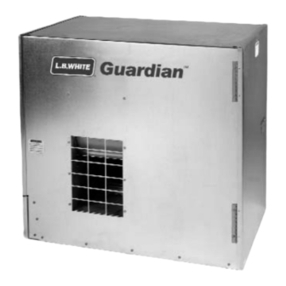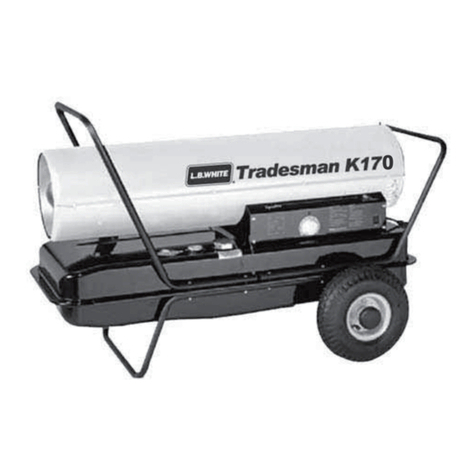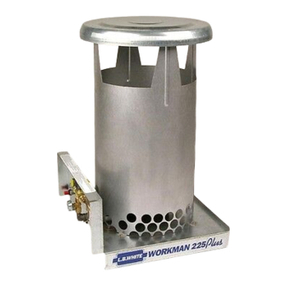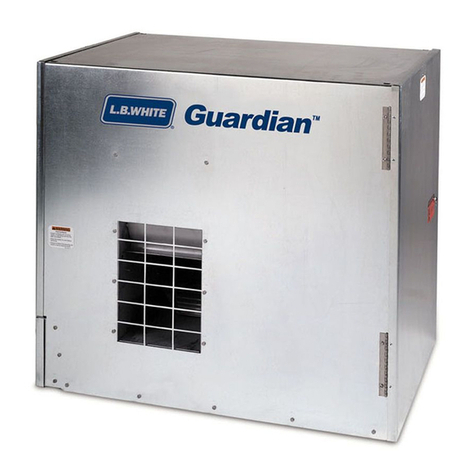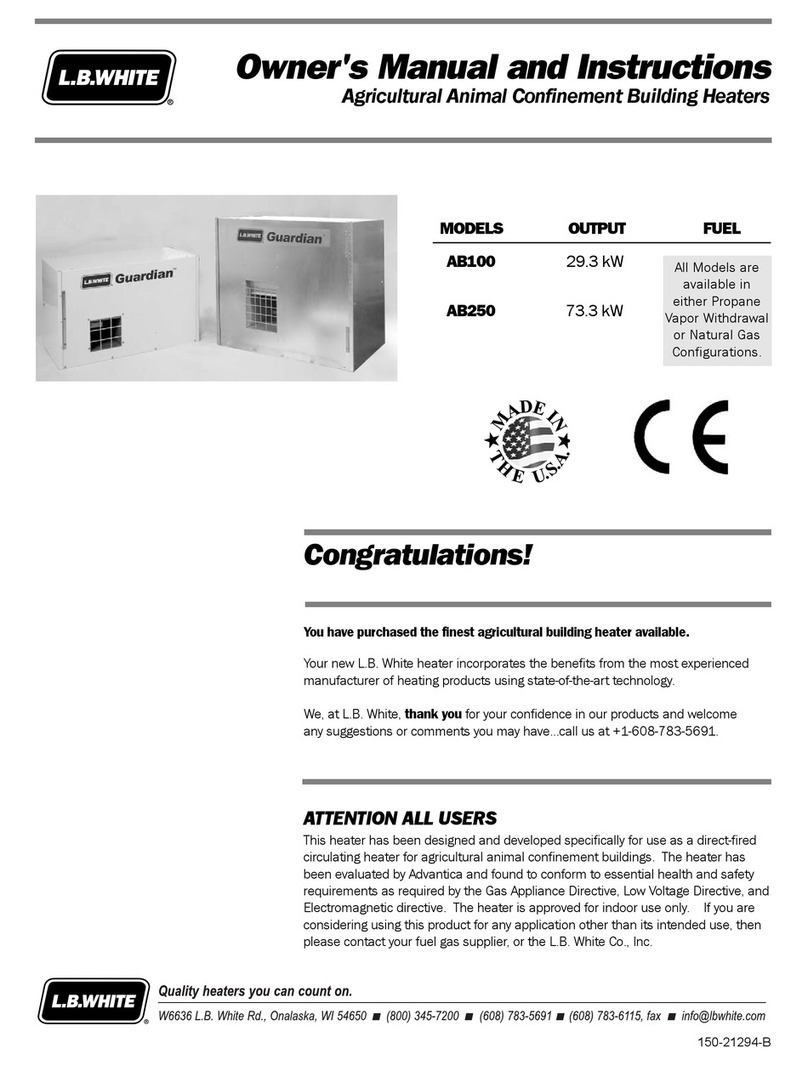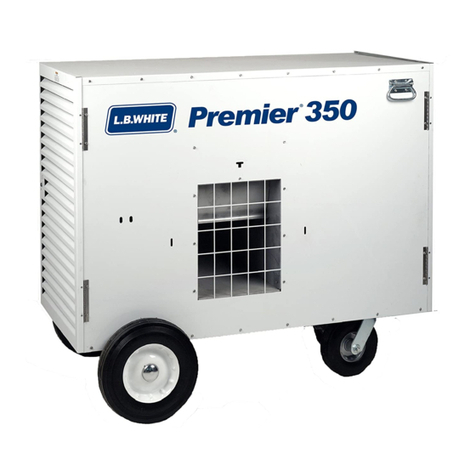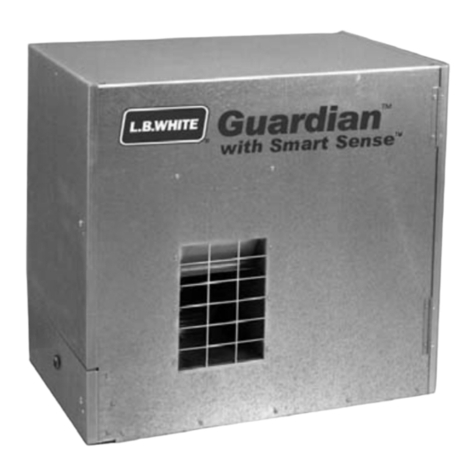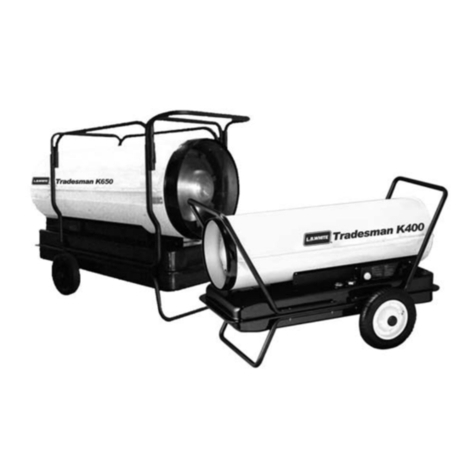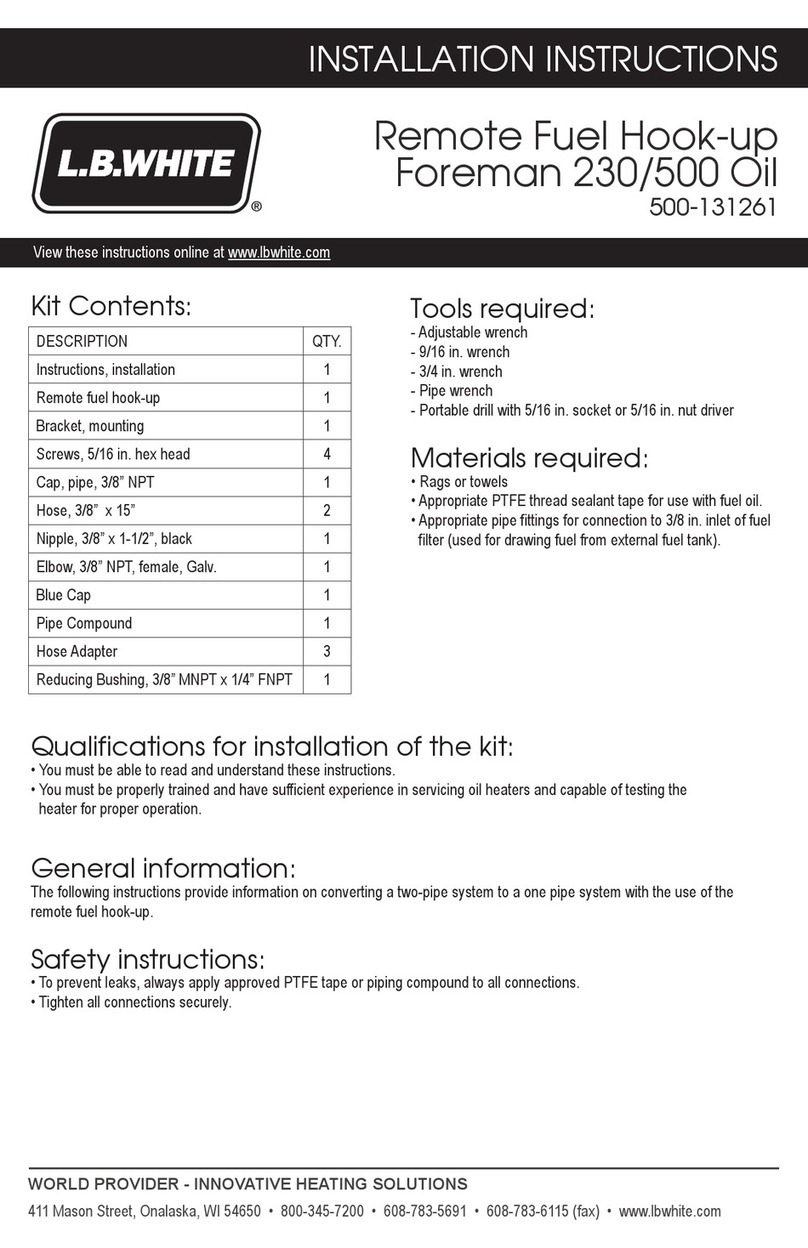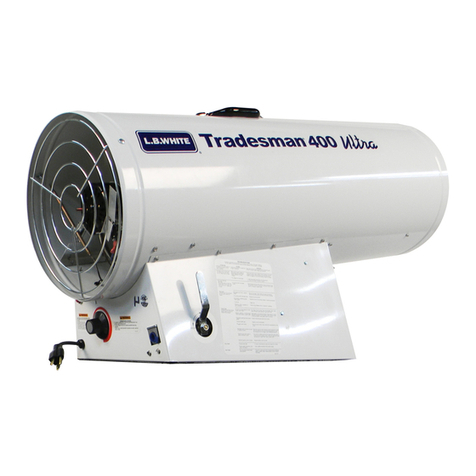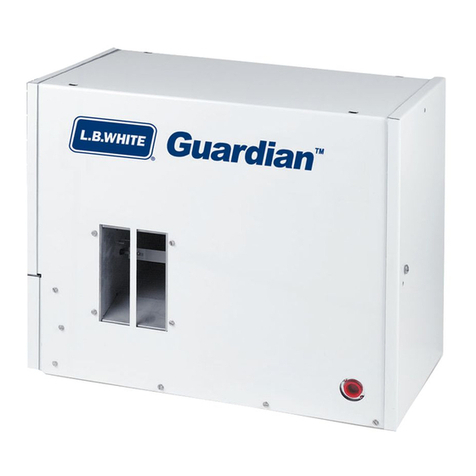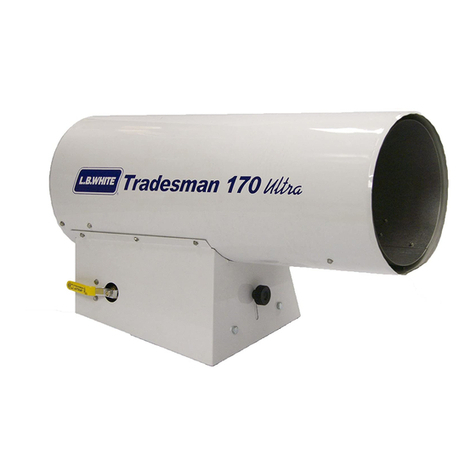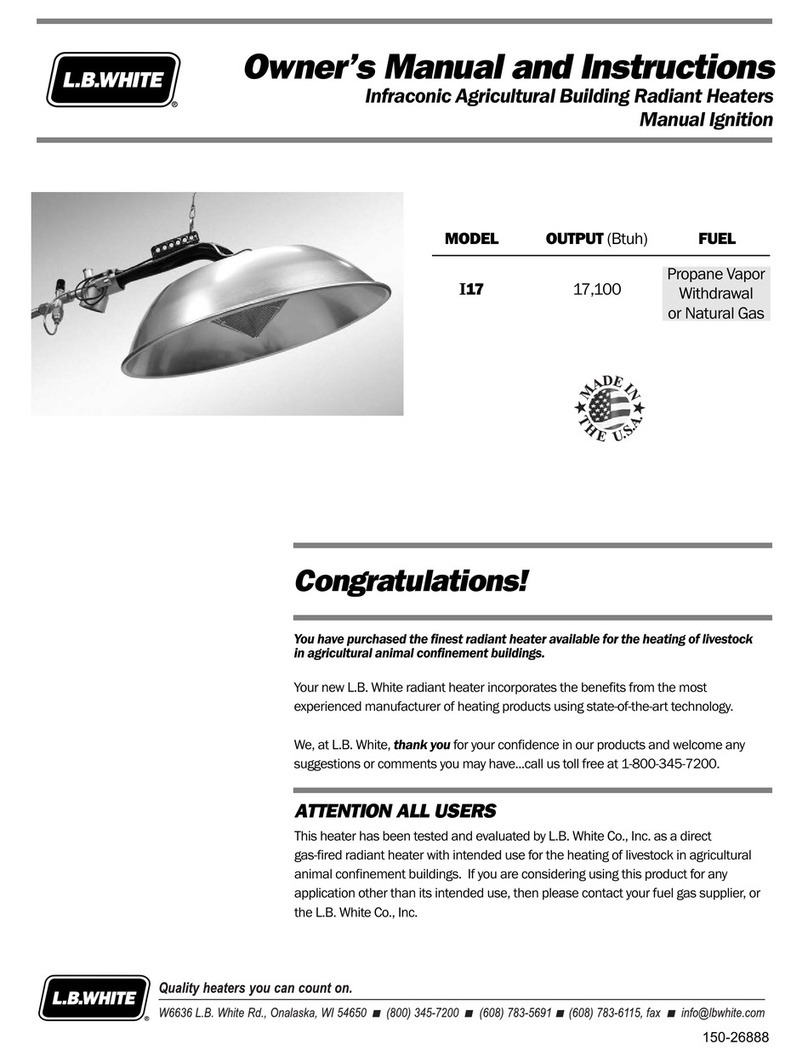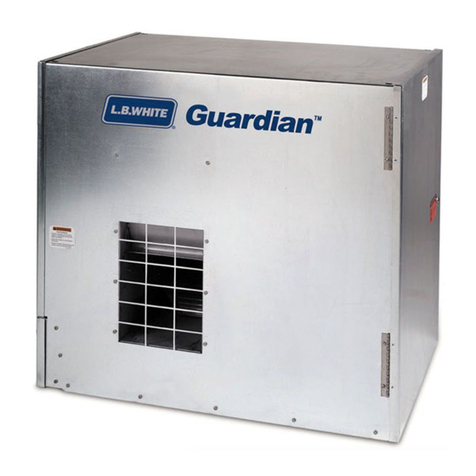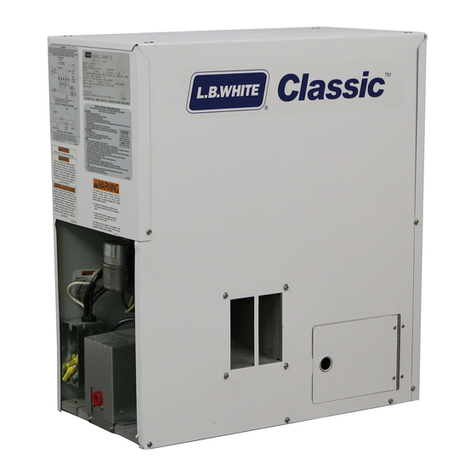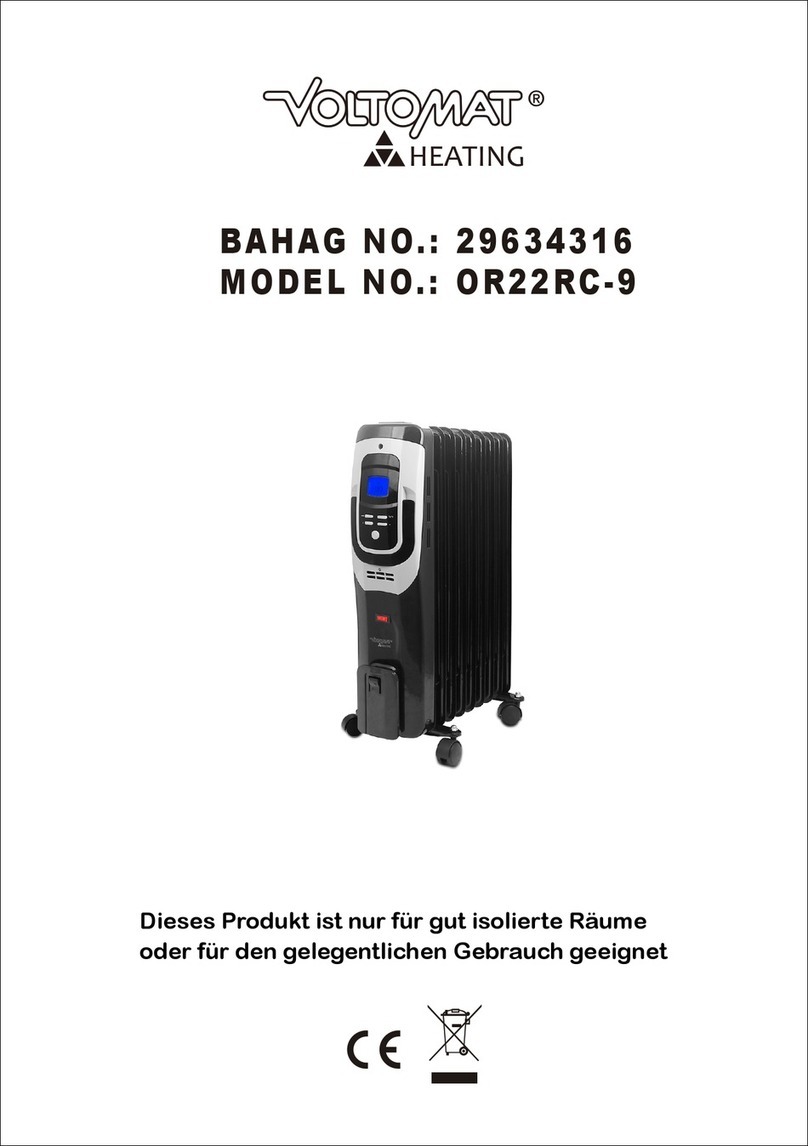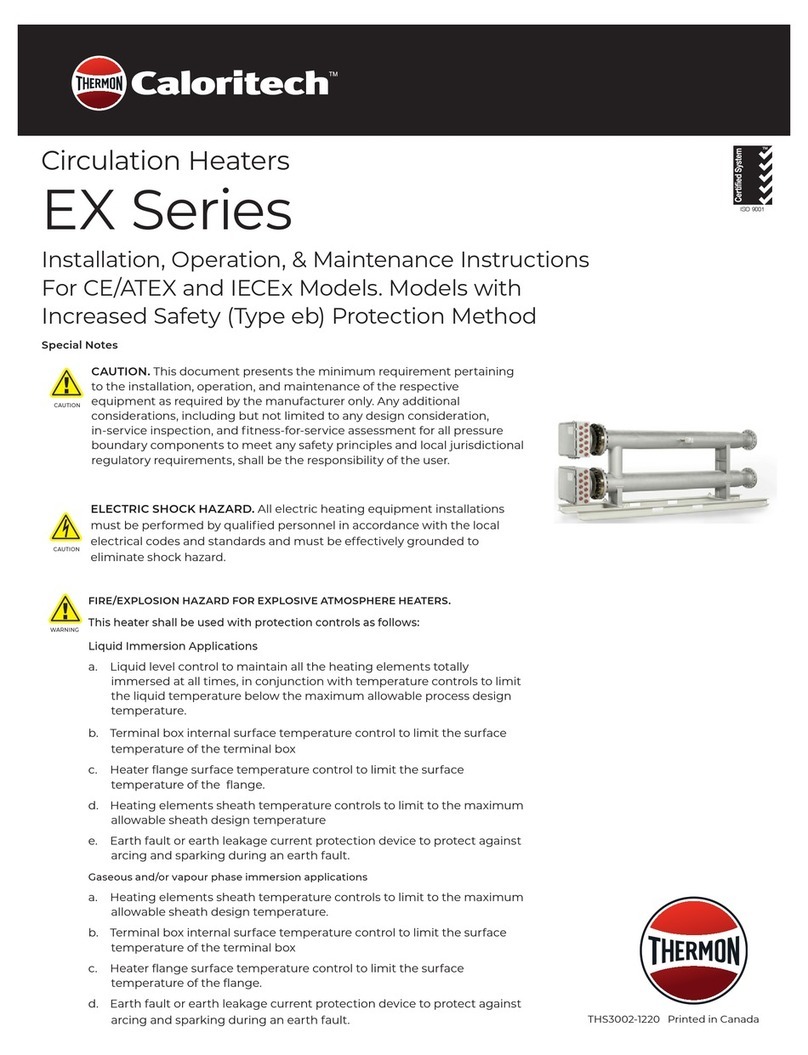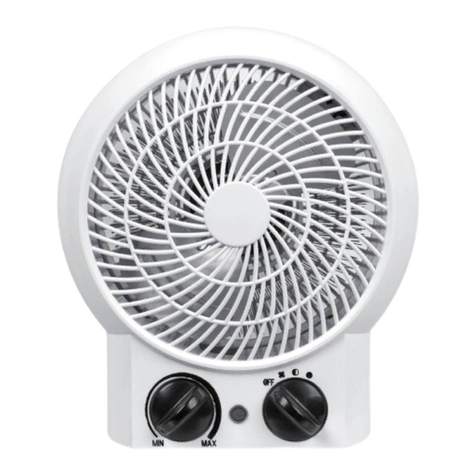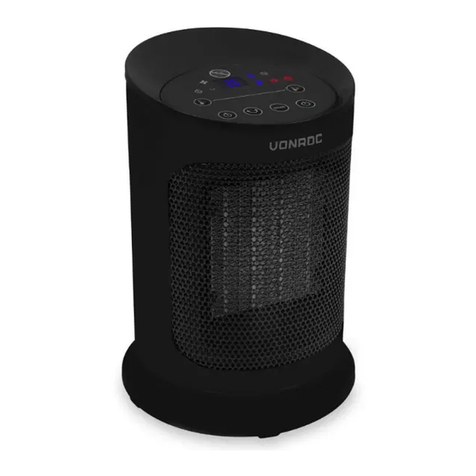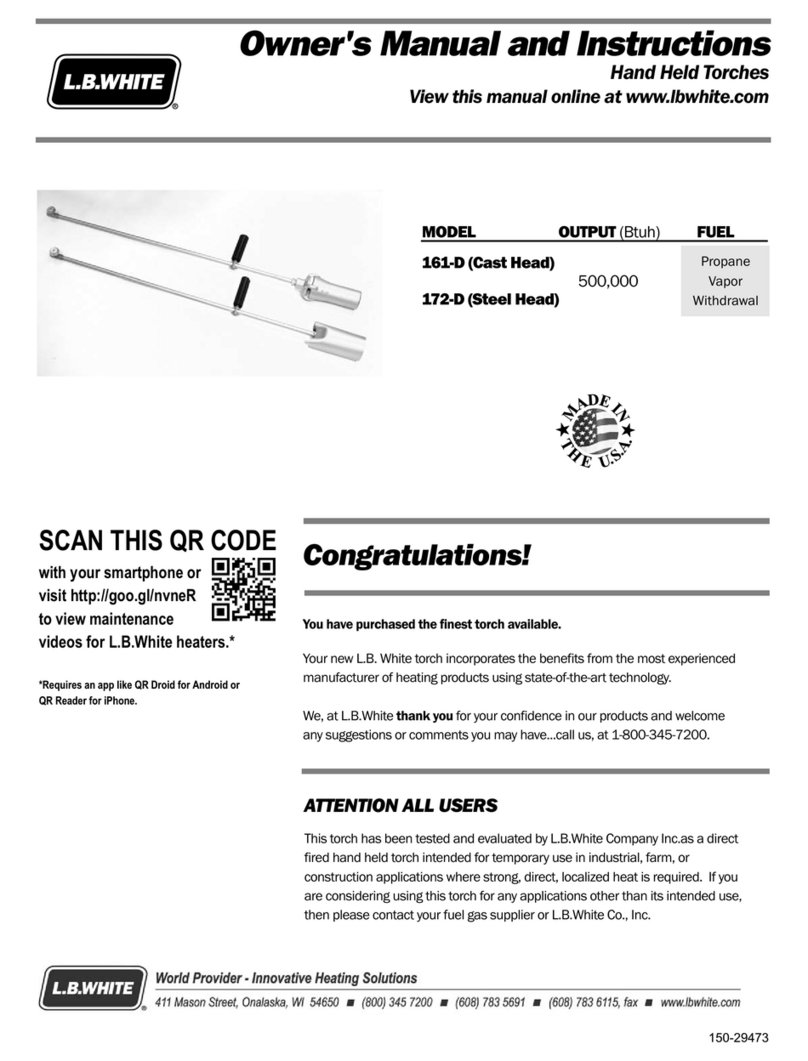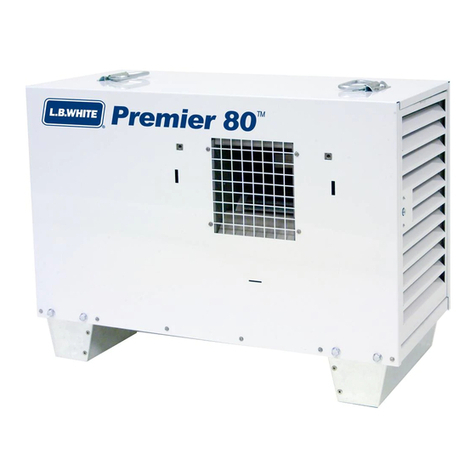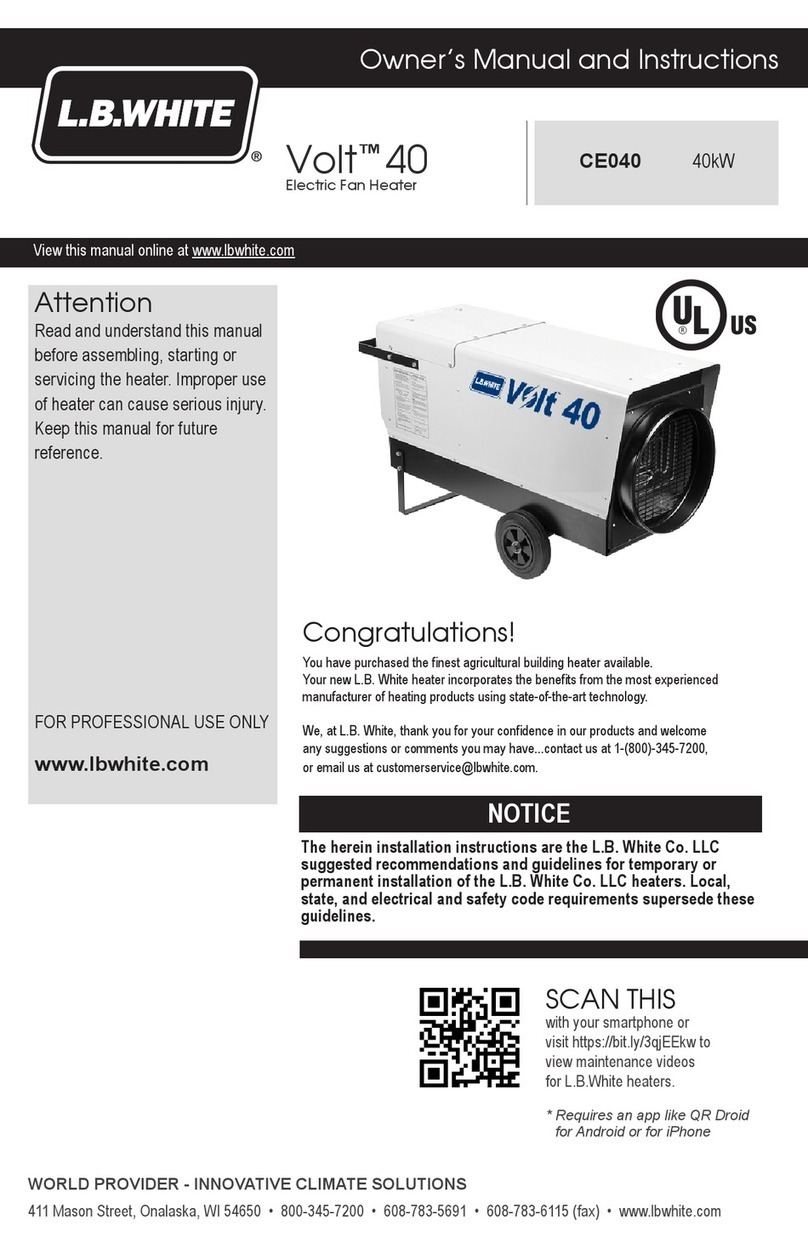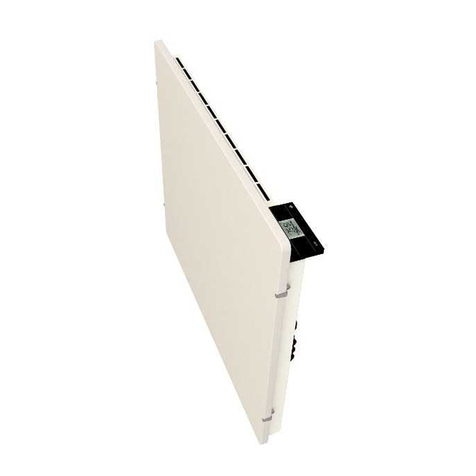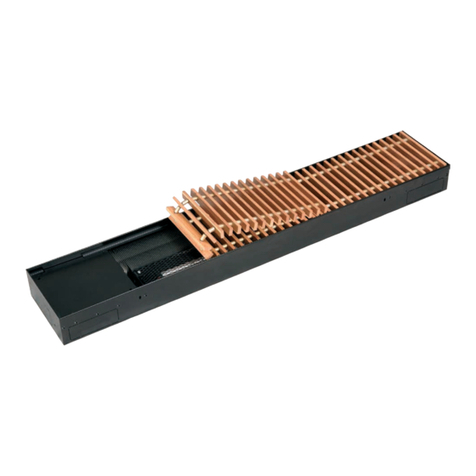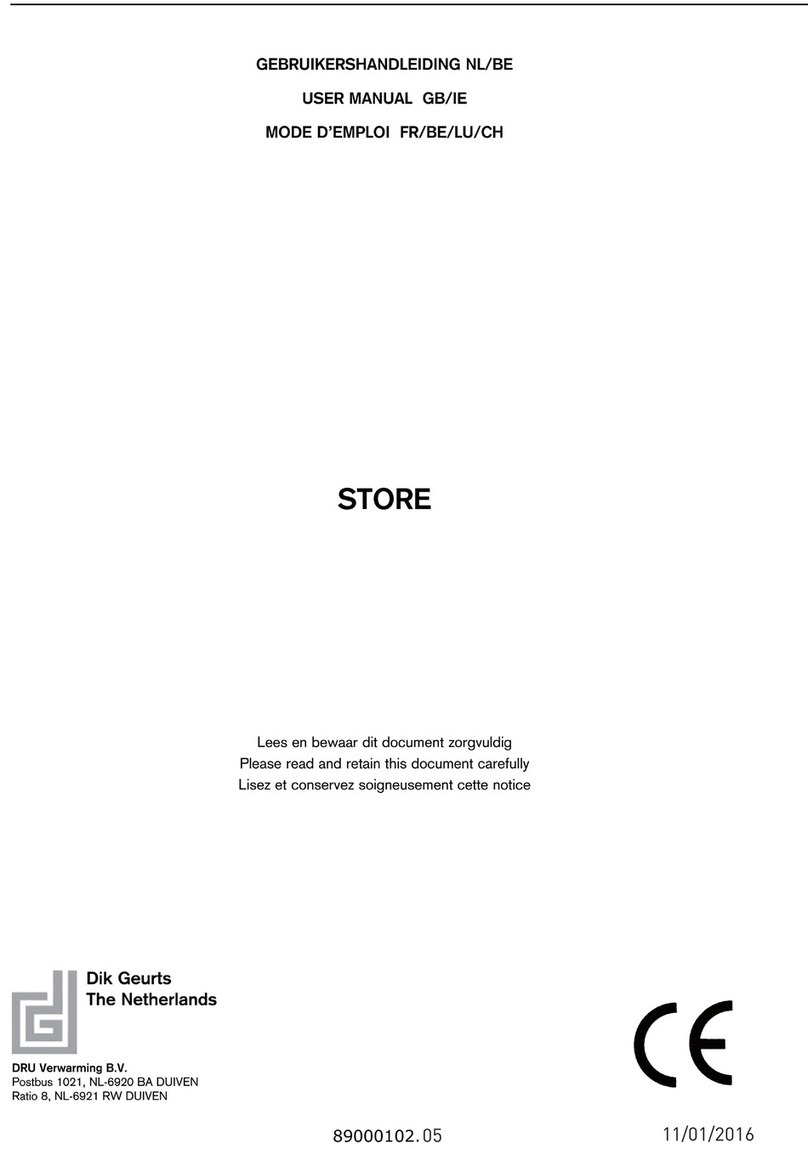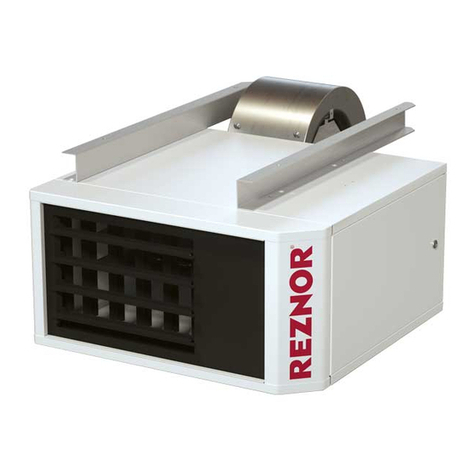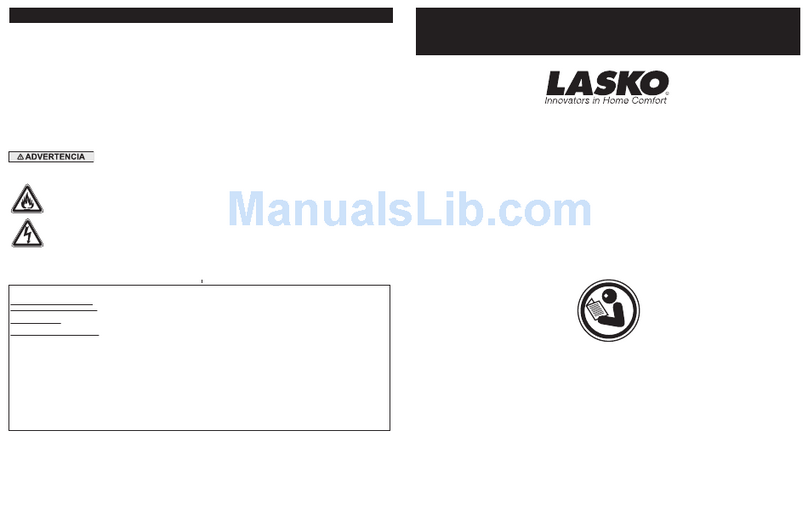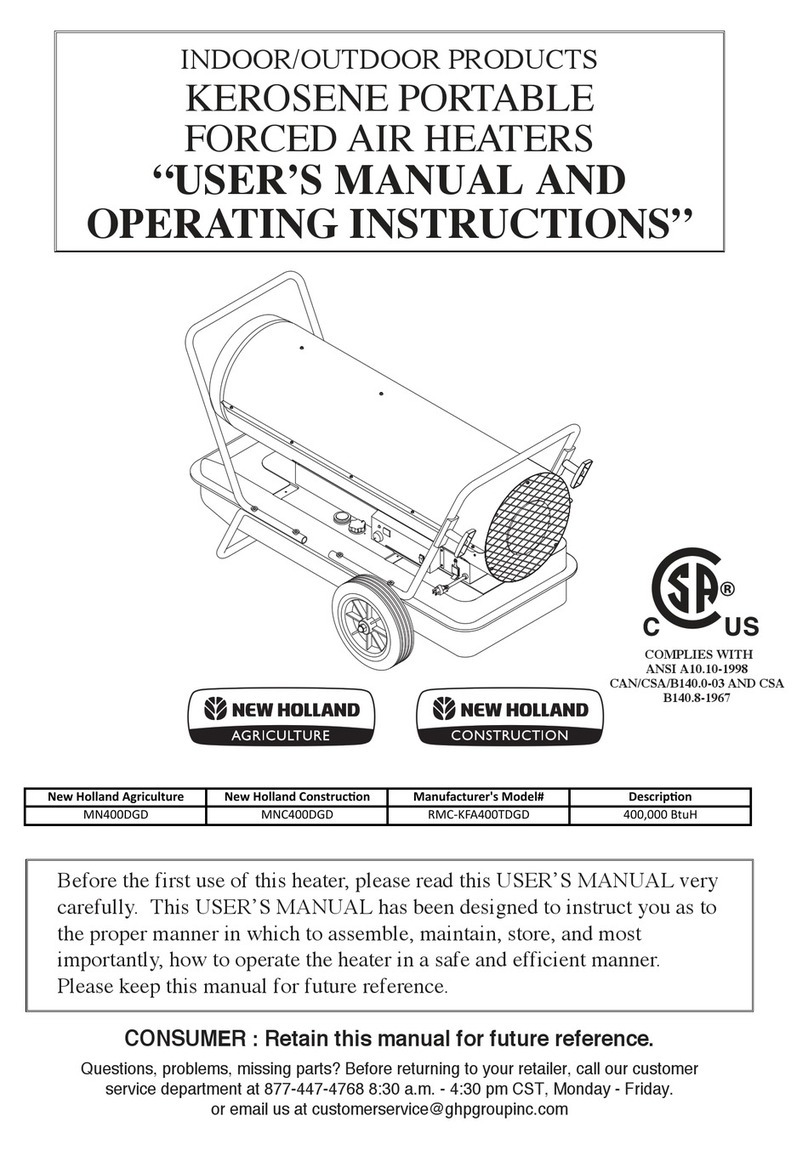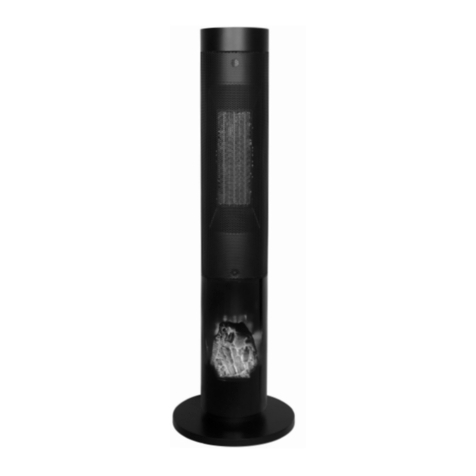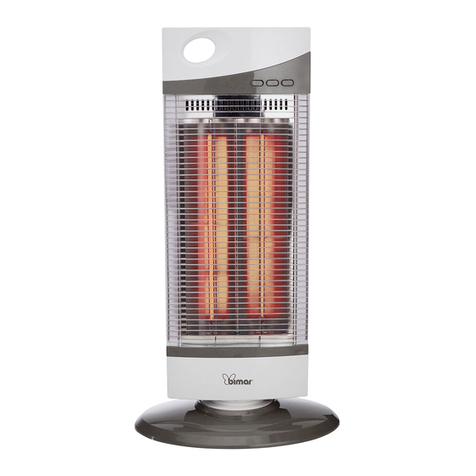1. Do not attempt to install, repair, or service this heater
or the gas supply line unless you have continuing
expert training and knowledge of gas heaters.
Qualifications for service and installation of this
equipment are as follows:
a.
To be a qualified gas heater service person, you
must have sufficient training and experience to
handle all aspects of gas-fired heater installation,
service and repair. This includes the task of
installation, troubleshooting, replacement of
defective parts and testing of the heater. You
must be able to place the heater into a continuing
safe and normal operating condition. You must
completely familiarize yourself with each model
heater by reading and complying with the safety
instructions, labels, Owner’s Manual, etc., that is
provided with each heater.
b.
To be a qualified gas installation person, you must
have sufficient training and experience to handle
all aspects of installing, repairing and altering gas
lines, including selecting and installing the proper
equipment, and selecting proper pipe and tank
size to be used. This must be done in accordance
with all local, state and national codes as well as
the manufacturer’s requirements.
2. All installations and applications of L.B. White heaters
must meet all relevant local, state and national
codes. Included are LPG, electrical, and safety
codes. Your local fuel gas supplier, a local licensed
electrician, the local fire department or similar
government agencies, or your insurance agent can
help you determine code requirements.
3. We cannot anticipate every use which maybe made
of our heaters. Check with the local fire safety
authority if you have questions about applications.
4. Once the heater has been lit, high surface and
exhaust temperatures can ignite clothing or burn
users who come too close to the heater. When the
heater is in operation, those working around the
heater should never touch the heater or come within
the clearances stated. Use extreme caution when
lighting the heater or adjusting heat levels.
5. Forced air heaters shall not be directed toward any
LPG container within 20 feet (6.10 meters).
6. Do not wash the heater. Use only compressed air, a
soft brush or dry cloth to clean the interior of the
heater and it’s components.
7. Use only the regulator supplied with the heater. The
heater must be regulated at all times for proper
operation.
8. For safety, this heater is equipped with an auto reset
backflash switch, and an air proving switch. Never
operate the heater with any safety device that has
been bypassed. Do not operate this heater unless
these features are fully functioning.
9. Do not block air intakes or discharge outlets of the
heater. Doing so may cause improper combustion or
damage to heater components leading to property
damage.
10 The hose assembly shall be visually inspected on a
daily basis after heater relocation and when the
heater is in use. If it is evident there is excessive
abrasion or wear, or if the hose is cut, it must be
replaced prior to the heater being put into operation.
The hose assembly shall be protected from building
materials, and contact with hot surfaces during use.
The replacement hose assembly shall be that
specified by the manufacturer. See parts list.
11. Check for gas leaks and proper function upon heater
installation, when relocating, and after servicing.
Refer to leak check instructions within installation
section of this manual.
12. This heater should be inspected for proper operation
by a qualified service person before each use and at
least annually.
13. Always turn off the gas supply to the heater if the
heater is not going to be used in the heating of the
work space.
14. This heater is equipped with a three-prong
(grounding) plug for your protection against shock
hazard and must be plugged directly into a properly
grounded three-prong receptacle. Failure to use a
properly grounded receptacle can result in electrical
shock, personal injury, or death.
15. If gas flow is interrupted and flame goes out, do not
relight the heater until you are that all gas that may
have accummulated has cleared away. In any event,
do not relight the heater for at least 5 minutes.
16. The heater requires a minimum 500 gallon tank for
proper gas supply pressure and operation. A larger
tank may be required depending upon temperature
conditions at the site.
17. When the heater is to be stored indoors, the
connection between the LPG supply container and
the heater must be disconnected. The container must
be stored in accordance with local codes.
18. LPG supply containers have left handed threads.
Always use the appropriate wrench to make a
connection to tighten or loosen the P.O.L. fitting at the
cylinders’ gas supply valve.
6




















